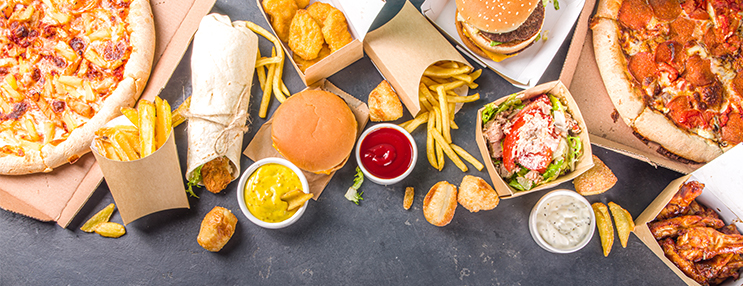

For Quick Service Restaurant (QSR) owners, things didn’t look so good in 2020. Now, over halfway through 2022, QSRs are shaking and baking while many industries continue to struggle. Through the pandemic, QSRs were clearly essential as drive through lines wound through neighborhood streets. With hungry mouths to feed, successful operators take pride in filling a need and working tirelessly to offer the food and convenience consumers crave.
“Given emergent technology, changing consumer behavior and dining preferences, and the extraordinary challenges of the last 2 years, the industry is unlikely to ever completely return to its pre-pandemic state. . .. recovery speed varies across the industry by segment, the constant innovation and sustained flexibility of restaurant operators are creating a new future for the restaurant industry. There will continue to be ample opportunities for growth in 2022 and beyond. –Hudson Riehle, SVP Research and Knowledge Group at the Association, Source: QSR Magazine
After a pause in the early days of the pandemic, merger and acquisition activity in the restaurant industry rebounded in 2021, and we’re seeing a lot of movement at the ownership level. Speculation around capital gains tax rate increases, operator fatigue, continuing labor shortage and increased food costs are fueling sellers and enticing buyers. Big companies are gaining market share while some smaller chains and mom and pop shops may be struggling to keep their doors open. Some of the smaller players are looking to dive into new industries or even retirement.

Regardless of the economic climate ahead, demand and opportunity remain in the food service space. It’s expected that M&A activity will continue to rise as hungry investors put capital behind food service companies. No doubt, there are concepts not on the menu now that will emerge, enticing investors to further indulge. Operators looking to exit the industry can sell to the highest bidder and offers are on the rise.
Culinary leaders are responding with a buffet of offerings, including engaging loyalty plans, menu enhancements and automations – in the kitchen and dining room, to maintain customer traffic and ease margin pressure.

Embracing technology has been a necessity in the food service industry. Much of the innovation including apps, online ordering, and third-party ordering and delivery, was already being used or developed. However, the pandemic forced operators to invest in a tall order of technology, and this continues to drive recovery and growth. Self-service kiosks, multi-drive thru lanes, and online ordering options are popular. Delivery services such as Grubhub, Postmates, Doordash, and Uber Eats have become ubiquitous and are an integral component of the QSR recipe for success.
QSR’s spice things up by leveraging incremental sales channels offering online ordering, carryout, and delivery options. Good old fashion hard work, dedication, and the willingness to adapt are key for survival in this tough market. Business owners are often more involved in day-to-day operations, getting their hands dirty, working in their restaurants morning to night. They are picking up extra shifts, taking phone calls, and even making deliveries. There is growing interest in leveraging AI as some operators use bots for relief amidst a labor shortage. AI expands capacity and helps resource strapped restaurants serve additional consumers.
The QSR industry continues to experience unprecedented headwinds and circumstances beyond control. Despite their success, operators are facing the same challenges as other small business owners, including:
Labor Shortage
The shortage of servers, cooks, cashiers, and other restaurant workers significantly affects the industry and the cost associated with running a QSR. It’s such a critical situation that many restaurants are forced to operate at reduced hours.
With staffing shortages, some are finding alternative/better uses for dining space and offering pickup and delivery options only. Converting dining space to food production areas enables operators to serve more customers and fill more bellies. Offering outdoor seating remains a popular option as well.
Supply Chain Disruption
Supply chain issues also raise multiple problems for restaurant owners. Fresh produce, meats, paper products (such as coffee cups, straws, and takeaway containers) are harder to attain and cost more. Continuing trucker shortages and delays in delivery have disrupted restaurants' supply chain, causing some restaurants to offer only a limited menu.
The 2022 State of the Restaurant Industry Report shows how the pandemic is reshaping the industry’s sales, operations, workforce, menus and use of technology. It also details consumer preferences and which trends are likely to stick.

Key findings in the State of the Restaurant Industry 2022 Report:
“I’ve been extremely impressed with my client’s resilience and positive attitude as they navigate the choppy waters. Franchisees have had to get creative as they encounter food and labor price surges and shortages. They’ve put everything on the table to keep the food on their customer’s table.” –Jeff Matos, VP, Franchise Sales at Ascentium Capital
----
Ascentium Capital can help busy QSR owners expand menu offerings and revenue streams. We have a buffet of financing options to help integrate technology and enhancements and capitalize on growth opportunities. The Ascentium team of specialists can also assist with selling or buying a QSR.
Simply fill out this quick form and a finance manager will contact you to discuss your business financing needs.
